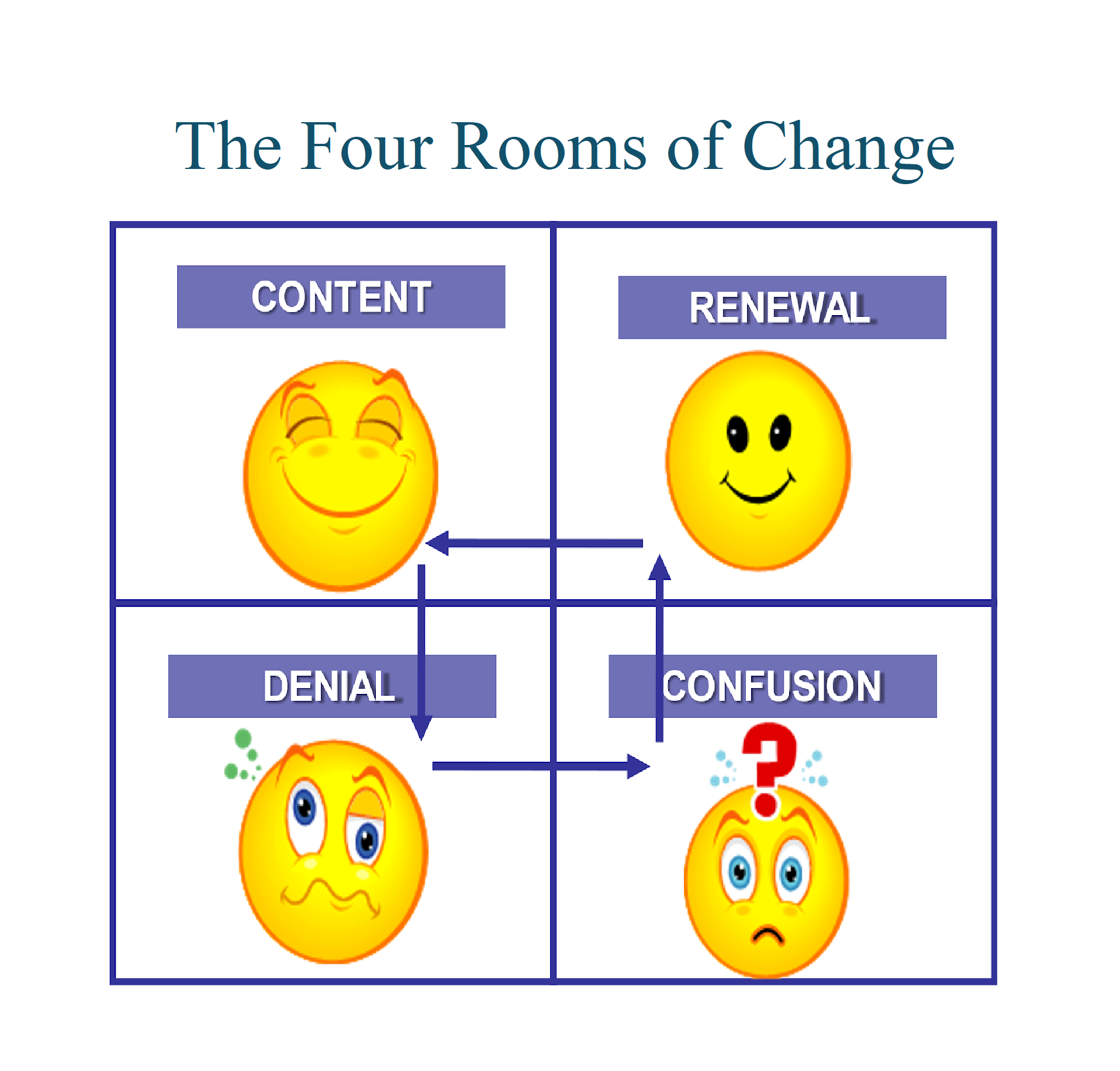The Four Rooms of Change
Claes Janssen during 1964-75 created the ‘Four Rooms of Change’, (often erroneously known as the ‘Change House’); whilst it is used as a psychological model it also is a valuable tool to help people understand and move through elements of change.

Each of the four rooms represents different ‘states’ a person may find themselves:
- Room of Contentment: A mindset where people are content with their situation with little desire to change. Everything feels ok, there is no want to learn new skills or consider different ways of working. If people and organisations spend too long here they become complacent and disarmed and end up in the ‘Sun Lounge’ out of touch or ignoring the ‘real world’ around them. But this is not reality. Big organisations, leaders and employees in their field often become lazy in their thinking and are at risk of resting on their laurels. So if key change then occurs around them they can end up moving to the…
- Room of Denial: Where people and organisations recognise change is happening, but believe it won’t impact upon them or doesn’t apply to them. They don’t see the threats and instead believe they are ok and perhaps even blame others, thinking the threat will be short lived or of little impact. At the extreme end of this people can end up ‘ostrich like’ in the Dungeon of Denial where they are stuck in their mindset.
- Room of Confusion: When people finally wake up to the situation around them, they realise something is wrong, though they don’t know how to respond appropriately to it. Emotions are high with uncertainty, anxiety and fear coming to the surface. Lots of analysis may take place. It is recognised that change is needed, new strategy, knowledge, behaviours and approaches, but there is still uncertainty of the direction to go in. People look to their leaders, who might be equally uncertain. Spending too long in this room, but needing to make decisions can lead to people ending up in the Paralysis Pit or even taking the Wrong Direction Door, employees and organisations need to be guided to the…
- Room of Renewal: Here people have made up their minds, we have a plan and we want to move forward, people think about new approaches or ideas about their work – continual improvement. Energy is developed in this room with creative thoughts coming to the fore. People are encouraged to identify, support and commit to new ways of working. The sharing of feelings, thoughts and experiences is encouraged to enable a conscious engagement toward change. Change is increasingly seen as positive with a mindset around “Iet’s try!”
